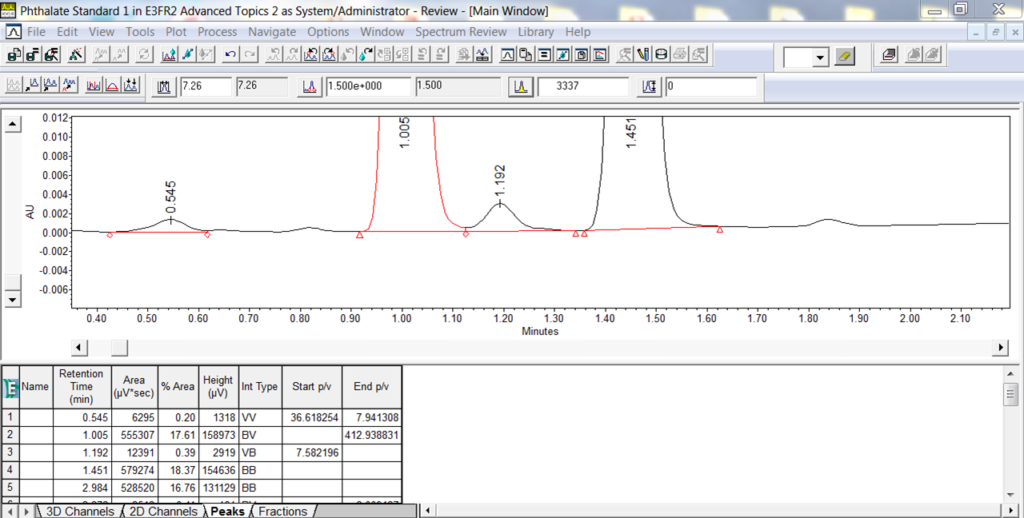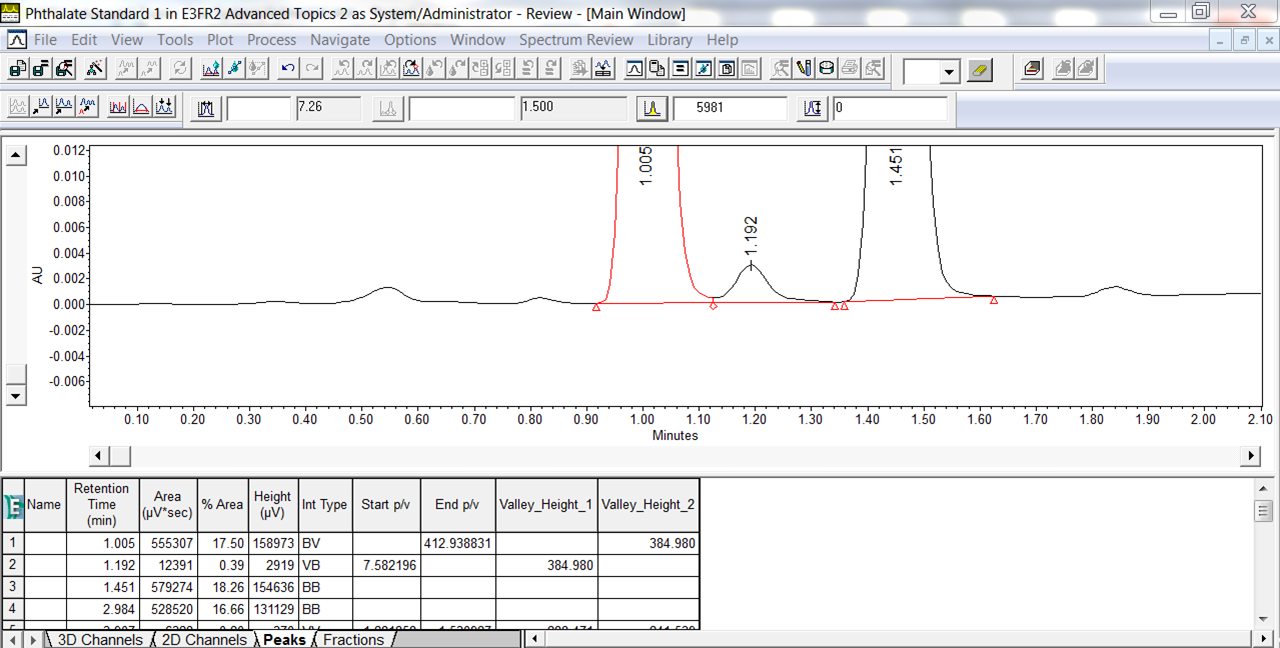How to Calculate the Height of the Valley Point Between Two Fused Peaks - Tip79
OBJECTIVE or GOAL
Welcome back to Get Empowered! In the last Empower tip-of-the-week post for Empower CDS Software, we answered a reader-submitted question and learned how to quantitate impurities against the main component. (Tip #78)
(See the link at the bottom of our post to see previous questions, ask your own question, or to provide a tip of your own!)
In this week’s tip, I’ll answer a question as a follow-up to Tip #74 on using Empower’s System Suitability option to calculate the ratio of peak to valley height when there’s a valley between the chromatographic peaks.
Question: How can we calculate the height of the valley point between two fused peaks?
Another great question.
Let me show you how it is done.
ENVIRONMENT
- Empower
PROCEDURE
- If we recall from Tip #74, the ratio of peak height to valley height is calculated as start p/v or end p/v. The height of the relatively big peak at 1.005 minutes ends at a valley point, so Empower Software reports the end p/v. The peak at 1.192 minutes starts at a valley point so Empower reports the start p/v.

- If we solve for valley height, the calculation would be valley height = peak height/start p/v or peak height/end p/v.

- This is a simple peak custom field in Empower. (You can make a similar one substituting end p/v.)

- We see the result of the calculation in the peaks table in Review. The valley height is the same regardless of which calculation we use.

It’s that easy!
ADDITIONAL INFORMATION
- We will do a series of Empower Tips on Custom Fields later this year… Stay tuned!
- This procedure can be followed using the QuickStart or Pro interface.
id69292, EMP2LIC, EMP2OPT, EMP2SW, EMP3GC, EMP3LIC, EMP3OPT, EMP3SW, EMPGC, EMPGPC, EMPLIC, EMPOWER2, EMPOWER3, EMPSW, SUP

